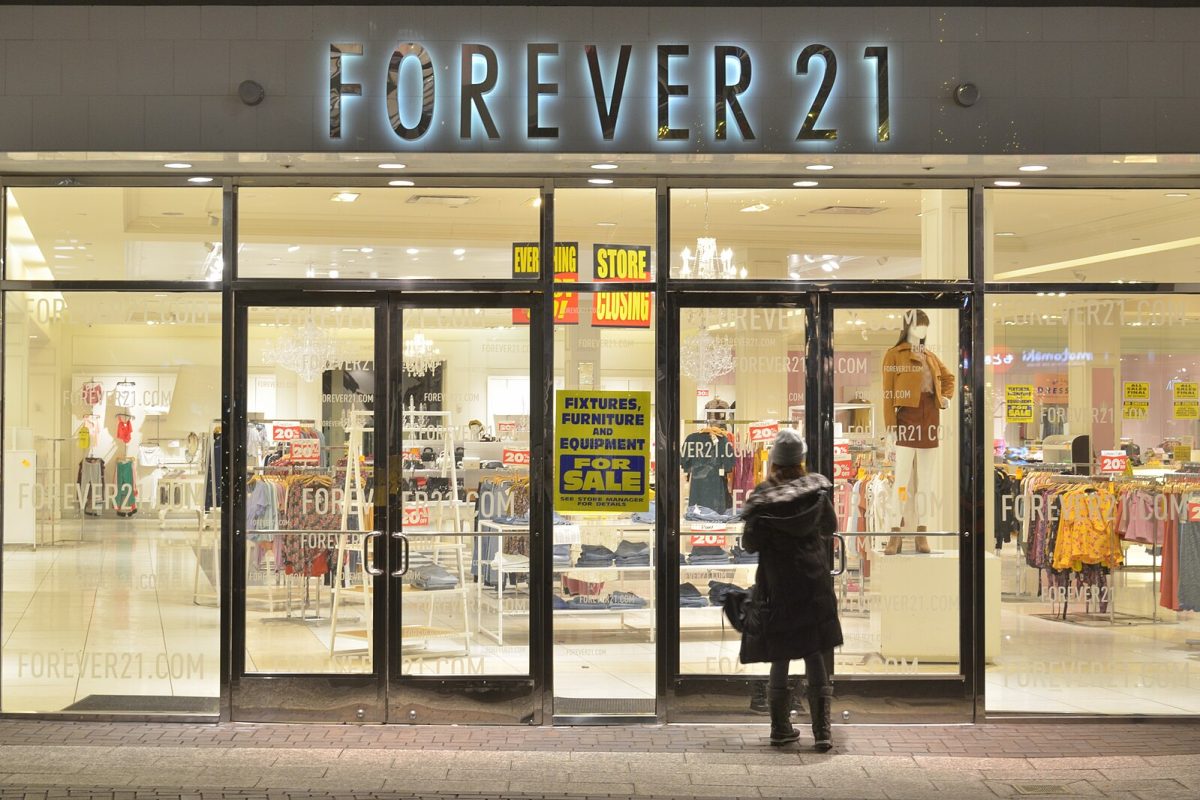Once a popular destination for inexpensive, trendy clothes, the popular retail store Forever21 has officially announced that it will be shutting down all of its American stores by early April. Forever21’s announcement did not come at a complete shock to many, considering the once-successful company filed for bankruptcy for the first time in 2019 — however, the abruptness of the clothing store’s decline in success might hint at an underlying trend across America’s fast fashion companies.
First, it’s important to distinguish between fast fashion and sustainable clothing brands, both of which are prevalent in the American fashion industry. Clothing brands such as Forever21 are labeled as fast fashion because they generally abide by the key characteristics of the fast fashion business model: low prices, trend-vdriven designs, quick turnaround time for designs, mass production, and constant inventory maintenance. Contrastingly, sustainable clothing brands utilize a slower, more thoughtful production process, often prioritizing ethical labor practices and durable designs over lower prices and quick trend participation. Customers typically approve of companies following the fast fashion structure rather than sustainable ones because they can participate in media-driven fashion trends without sacrificing excess amounts of spending money. However, the constant desire to find the lowest prices has shifted American consumers to another purchasing outlet — foreign fast fashion companies.
Take the global inexpensive fashion phenomenon Shein, for instance. Although the company was initially founded in 2008, it gained massive popularity around 2019 due to increased use of social media advertising via TikTok, Instagram, and YouTube sponsorships. Interestingly, Shein’s popularity began to soar just as Forever21’s decades of success began to decline. Aside from smarter marketing strategies, what exactly contributes to Shein’s lasting appeal, even six years later?
Just as Forever21 caught the eye of young adult Americans, Shein’s even lower prices sealed the aforementioned American company’s fate for good. Shein’s clothes are made incredibly cheaply and with a remarkably quick turnaround time — efficient enough that it updates its website with thousands of new items on a daily basis. The quickly growing China-based company primarily gained popularity from its clever trend-identifying strategies. Rather than relying on employees to methodically observe new changes in attire, Shein has shifted to using AI and data analysis to quickly spot trends and correspondingly produce styles. This more efficient method has successfully overpowered the efforts of American companies like Forever21, who have failed to effectively compete with companies such as Shein that can offer unbeatable prices and new style types.
Additionally, American companies are often under increased scrutiny for their production and design practices compared to foreign brands. New government laws and regulations focused on American commerce have begun to require more transparency about supply chains, restrictions on labor, and more information on companies’ climate-damaging practices. Because foreign companies often do not have to manage these kinds of production barriers, they are able to reach out to more consumers with their up-to-date clothing trends and comparatively cheaper prices.
All points considered, the future of major American fast fashion companies seems uncertain. However, it’s important to note that somewhat elevated fast fashion companies such as H&M and Zara are still able to maintain their businesses without facing much competition from foreign brands like Shein. Will companies such as Forever21 be forced to adapt and elevate themselves in response to new business threats, or will they simply be forced to close their doors forever?







